The Biggest list of 35 FREE UX Books
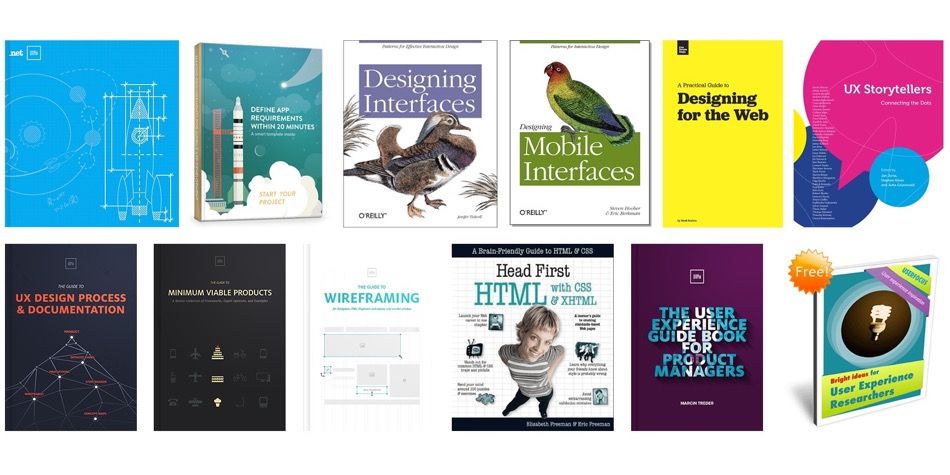
Welcome to our comprehensive compilation of the biggest collection of FREE User Experience (UX) ebooks available on the internet. This invaluable resource is designed to equip you with the tools and knowledge necessary to enhance your UX design, conduct thorough User Research / User Testing, and elevate your overall Usability.
Discover a wealth of expert insights and practical advice that will empower you to create exceptional User Experiences and drive the success of your projects. Get ready to embark on a journey of UX excellence with our carefully curated selection of ebooks.
You won’t find a list this extensive anywhere else. Please share with your colleagues using the social links above and let us know on X which books you liked the best.
1. UX Design for Startups
Every startup needs to get a fantastic product in front of its target market. People will only spend time getting to know your product, when they feel that they can use it intuitively. Learning how to build a UX design for startups gives you a big advantage over competitors. Thanks a lot UXPin.
2. Define App Requirements within 20 minutes
A FREE eBook for app developers who need a little hand to start. With it you’ll learn quick ways to locate selling points on your app, tips to boost user interaction, questions to ask designers and marketing teams to get the most of the app and more.
Read Define app requirements within 20 minutes
3. Designing Interfaces
Despite all of the UI toolkits available today, it’s still not easy to design good application interfaces. This best selling book by Jenifer Tidwell is one of the few reliable sources to help you navigate through the maze of design options. By capturing UI best practices and reusable ideas as design patterns, Designing Interfaces provides solutions to common design problems that you can tailor to the situation at hand.
Read Designing Interfaces
4. Designing Mobile Interfaces
With hundreds of thousands of mobile applications available today, your app has to capture users immediately. This book by Steven Hoober and Eric Berkman provides practical techniques to help you catch and keep users attention. You’ll learn core principles for designing effective user interfaces along with a set of common patterns for interaction design on all types of mobile devices.
Read Designing Mobile Interfaces
5. Designing for the Web
Designing for the Web by Mark Boulton is a practical guide that aims to teach you techniques for designing your website using the principles of graphic design.
Designing for the web
6. UX Storytellers – Connecting the Dots
42 UX masterminds tell personal stories of their exciting lives as User Experience professionals. The book brings together authors from around the world who paint a very entertaining picture of our multifaceted community. Whether you’re a Usability pro or a student of interaction design, whether you’re a senior information architect or a junior UX designer, you will find 42 entertaining stories in this book told by leading experts from all over the globe.
Read UX Storytellers – Connecting the Dots
7. The Guide to UX Design Process & Documentation
A master collection of product & UX design frameworks, examples and expert opinions at every stage.
- Learn from the best in this FREE eBook by UXPin
- Real-life examples of 25+ documents across 7 product stages
- Advice on utilizing deliverables in lean and agile environments in large and small companies
- Experts’ take on the strengths, weaknesses, and ways to think about each design stage and related deliverables
Read The Guide to UX Design Process & Documentation
8. The Guide to Minimum Viable Products (MVP)
The art and science of building great products with minimum resources as practiced by companies like Twitter, Dropbox, Airbnb, and Buffer among others.
– Real-life examples of MVP success and failure
– Advice on applying MVP thinking in lean and agile environments
– Experts’ take on balancing between resource minimalism and business viability
Read The Guide to Minimum Viable Products
9. The Guide to Wireframing
User Experience remains a priority for digital platforms and products. UXPin take a closer look at the power of wireframing and the examples, comparisons, frameworks, references and insights to help you better utilize wireframes in your product and development process.
They start with the basic concepts like who uses wireframes, what’s their purpose and how you can use them with which tools. For more experienced readers, they present the top web and mobile wireframe examples, pattern sources and design patterns.
Read The Guide to Wireframing
10. The User Experience Guide Book For Product Managers
Get Free The User Experience Guide Book For Product Managers by Marcin Treder. It contains:
– Theory and practice of delivering remarkable experience with any product
– Wireframing and prototyping for Product Managers
– Extensive list of UX design tools
– Life-based advice of nurturing effective design aware culture
Read The User Experience Guide Book For Product Managers
11. Tips on How to Recruit Participants for Usability Studies
A well-managed recruiting program at an organization allows teams to quickly find quality participants for Usability studies.
This 190-page report by NNGroup gives you 234 guidelines on how to set up and manage a recruiting program. It also presents advice on when to outsource to a recruiting agency and when to use in-house recruiting.
Read Tips on How to Recruit Participants for Usability Studies
12. Bright ideas for User Experience Researchers
If you’re a User Experience researcher, start here.
This eBook by Userfocus contains 91 pages of real-world help on User Experience research, in handy portable form:
– What User Researchers can learn from Sherlock Holmes
– The 4 questions to ask in a cognitive walkthrough
– Usability test data
– Red route Usability: The key user journeys with your web site
– Measuring satisfaction: Beyond the Usability questionnaire
– Site visit interviews: from good to great
– The 5 habits of highly effective field researchers
– Is consumer research losing its focus?
– Do you make these 4 mistakes when carrying out a Usability review?
– How to create personas your design team will believe in
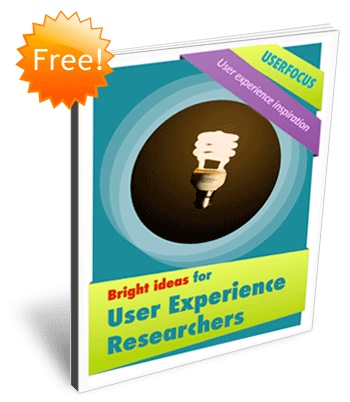
Read Bright ideas for User Experience Researchers
13. Bright ideas for User Experience Designers
If you’re a User Experience designer, start here.
This eBook by Userfocus contains 100 pages of real-world help on User Experience Design, in handy portable form:
– A CRAP way to improve Usability
– 7 myths about paper prototyping
– Help! What The Beatles can teach us about writing support material
– Confessions of an Axure Master: 5 shortcuts for laying out Axure pages in record time
– Communicating errors
– 4 ways to prototype faster
– Why you need a user experience vision (and how to create and publicise it)
– Card Games for Information Architects
– Tips for writing user manuals
– Five kinds of ‘alt’ text
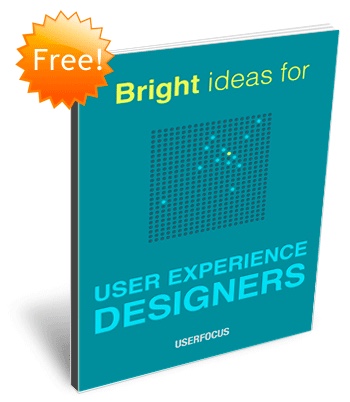
Read Bright ideas for User Experience Designers
14. Head First HTML with CSS
Tired of reading HTML books that only make sense after you’re an expert? Then it’s about time you picked up Head First HTML by Elisabeth Freeman and Eric Freeman and really learned HTML. You want to learn HTML so you can finally create those web pages you’ve always wanted, so you can communicate more effectively with friends, family, fans, and fanatic customers. You also want to do it right so you can actually maintain and expand your web pages over time so they work in all browsers and mobile devices. Oh, and if you’ve never heard of CSS, that’s okay–we won’t tell anyone you’re still partying like it’s 1999–but if you’re going to create web pages in the 21st century then you’ll want to know and understand CSS.
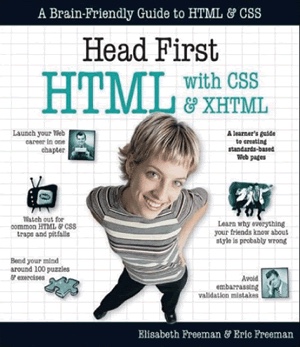
Read Head First HTML with CSS & XHTML
15. Getting Real
Want to build a successful web app? Then it’s time to Get Real by 37 Signals. Getting Real is a smaller, faster, better way to build software.
16. Knock Knock
The purpose of most communication isn’t to completely explain yourself. Too often, we get stuck relieving tension, making our case and closing the door on the discussion.
The purpose is to open the door to interaction, learning and action. “Who’s there?” is a fine response to hope for.
Communication is a process, not an event.
Knock Knock by Seth Godin is a guide to building a website that works.
17. CSS Cookbook
As the industry standard method for enriching the presentation of HTML-based web pages, Cascading Style Sheets (CSS) allow you to give web pages more structure and a more sophisticated look. But first, you have to get past CSS theory and resolve real-world problems.
For those all-too-common dilemmas that crop up with each project, CSS Cookbook provides hundreds of practical examples with CSS code recipes that you can use immediately to format your web pages. Arranged in a quick-lookup format for easy reference, the second edition has been updated to explain the unique behavior of the latest browsers: Microsoft’s IE 7 and Mozilla’s Firefox 1.5. Also, the book has been expanded to cover the interaction of CSS and images and now includes more recipes for beginning CSS users. The explanation that accompanies each recipe enables you to customize the formatting for your specific needs. With topics that range from basic web typography and page layout to techniques for formatting lists, forms, and tables, this book is a must-have companion, regardless of your experience with Cascading Style Sheets.
18. The Fable of the User Centered Designer
The Fable of the User Centered Designer by David Travis.
“Once there was a bright young man who was looking for an effective designer. He wasn’t looking for just any designer. He wanted to find a designer who could design complex technology that was simple to use.”
Follow a young man’s journey as he discovers the three secrets of User Centred Design.
It’s a small book that has big results.
Read The Fable of the User Centered Designer
19. Converting The Believers
Online marketing is about creating believers. In the U.S. alone, companies spent over $21 Billion last year driving visitors to their websites and doing their best to turn doubters into believers. For all of the money spent leading believers to the virtual door, though, only a fraction of those companies spent the time and money necessary to convert those believers into buyers.
“Converting The Believers” is an eBook by usereffect designed to help you turn believers into buyers and maximize your website’s ROI. Learn how to use analytics, Usability and Testing to systematically improve online sales.
20. Usability Guidelines
The new edition of the U.S. Department of Health and Human Services’ (HHS) Research-Based Web Design and Usability Guidelines. These guidelines reflect HHS’ commitment to identifying innovative, research-based approaches that result in highly responsive and easy-to-use Web sites for the public.
These guidelines help move us in that direction by providing practical, yet authoritative, guidance on a broad range of Web design and communication issues. Having access to the best available research helps to ensure we make the right decisions the first time around and reduces the possibility of errors and costly mistakes.
21. The Guide to Mockups Mockup types, methods and best practices
A FREE eBook exploring the types, purposes, and anatomy of mockups. Best practices are included for Photoshop and Sketch:
– Inside look at the anatomy of mockup design: navigation, menus, UI patterns, and more
– Best practices for designing mockups in Photoshop & Sketch
– Explanation of how to use UI mockups of all types and fidelities
– 7 chapters of example-driven design advice
Read The Guide to Mockups
22. Six circles – An experience design framework
Solving people problems will inevitably solve business problems. The challenge is to get businesses to believe in it, and trust those to deliver on the promise of user centered design. James Kelway started the Six Circles – an Experience Design Framework, as an enquiry into how different design principles can be applied to the field of digital product design. The principles studied led to the emergence of six core themes; persuasion, behavior, visual design, Usability, interaction and content. The book describes the importance of these areas and how working systematically with these themes will require a holistic mindset and approach that require multi-disciplinary teams within organizations to ensure the creation of quality products. It is also serves as a way to judge the effectiveness of digital products using the six lenses described.
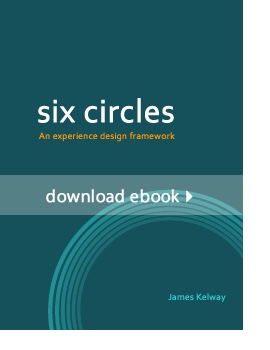
Six circles – An experience design framework
23. Elements of Psychology
The governing aim in the preparation of this work has been to furnish a suitable text-book for beginners in metaphysical studies by Henry N. Day.
Read Elements of Psychology
24. Learning, Remembering, Believing: Enhancing Human Performance
Can such techniques as sleep learning and hypnosis improve performance? Do we sometimes confuse familiarity with mastery? Can we learn without making mistakes? These questions apply in the classroom, in the military, and on the assembly line.
Learning, Remembering, Believing by Daniel Druckman and Robert A. Bjork addresses these and other key issues in learning and performance. The volume presents leading-edge theories and findings from a wide range of research settings: from pilots learning to fly to children learning about physics by throwing beanbags. Common folklore is explored, and promising research directions are identified. The authors also continue themes from their first two volumes: Enhancing Human Performance (1988) and In the Mind’s Eye (1991).
Read Learning, Remembering, Believing: Enhancing Human Performance
25. Psychology and Industrial Efficiency
Our aim is to sketch the outlines of a new science which is to intermediate between the modern laboratory psychology and the problems of economics: the psychological experiment is systematically to be placed at the service of commerce and industry. So far we have only scattered beginnings of the new doctrine, only tentative efforts and disconnected attempts which have started, sometimes in economic, and sometimes in psychological, quarters. The time when an exact psychology of business life will be presented as a closed and perfected system lies very far distant. But the earlier the attention of wider circles is directed to its beginnings and to the importance and bearings of its tasks, the quicker and the more sound will be the development of this young science.
Psychology and Industrial Efficiency is by Hugo Münsterberg.
Read Psychology and Industrial Efficiency
26. Mental Models in Human-Computer Interaction: Research Issues About What the User of Software Knows
Users of software systems acquire knowledge about the system and how to use it through experience, training, and imitation. Currently, there is a great deal of debate about exactly what users know about software. This knowledge may include one or more of the following:
– Simple rules that prescribe a sequence of actions that apply in certain conditions
– General methods that fit certain general situations and goals,
– “Mental Models,” knowledge of the components of a system, their interconnection, and the processes that change the components; knowledge that forms the basis for users being able to construct reasonable actions; and explanations about why a set of actions is appropriate.
Mental Models in Human-Computer Interaction by John M. Carroll and Judith Reitman Olson.
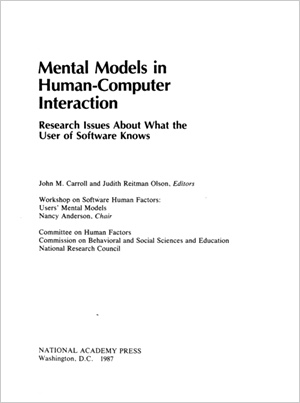
Read Mental Models in Human-Computer Interaction
27. The Elements of Typographic Style Applied to the Web
For too long typographic style and its accompanying attention to detail have been overlooked by website designers, particularly in body copy. In years gone by this could have been put down to the technology, but now the web has caught up. The advent of much improved browsers, text rendering and high resolution screens, combine to negate technology as an excuse.
Robert Bringhurst’s book The Elements of Typographic Style is on many a designer’s bookshelf and is considered to be a classic in the field. Indeed the renowned typographer Hermann Zapf proclaims the book to be a must for everybody in the graphic arts, and especially for our new friends entering the field.
Read The Elements of Typographic Style Applied to the Web
28. Search User Interfaces
Search is an integral part of peoples’ online lives; people turn to search engines for help with a wide range of needs and desires, from satisfying idle curiousity to finding life-saving health remedies, from learning about medieval art history to finding video game solutions and pop music lyrics. Web search engines are now the second most frequently used online computer application, after email. Not long ago, most software applications did not contain a search module. Today, search is fully integrated into operating systems and is viewed as an essential part of most information systems.
Search User Interfaces by Marti A. Hearst.
29. Web Style Guide
User Experience is an overarching consideration that involves a wide range of activities by anyone who makes decisions and takes actions that affect how people experience a web site. Every person on the web development team has a role to play. On many sites, users are active contributors, which means that they also influence whether a web site offers an enjoyable and accessible user experience. And providing a good User Experience is a critical factor in the success of any enterprise. Nothing is better for building a loyal following than providing a good experience, where people are successful in accessing and using content and features that they value.
Web Style Guide by Patrick J. Lynch and Sarah Horton.
30. Just Ask: Integrating Accessibility Throughout Design
The basics of including accessibility in design projects by Shawn Henry:
– Shortcuts for involving people with disabilities in your project
– Tips for comfortable interaction with people with disabilities
Details on accessibility in each phase of the User Centered Design process (UCD):
– Examples of including accessibility in user group profiles, personas, and scenarios
– Guidance on evaluating for accessibility through heuristic evaluation, design walkthroughs, and screening techniques
– Thorough coverage of planning, preparing for, conducting, analyzing, and reporting effective Usability tests with participants with disabilities
– Questions to include in your recruiting screener
– Checklist for Usability Testing with participants with disabilities
Read Just Ask: Integrating Accessibility Throughout Design
31. Building Accessible Websites
Using a strategic approach to the issues in a journalistic style, this book will be a foundation for how people think about this issue going forward-the first book people would read on the topic, before delving into the minutiae of the moment.
With lawsuits and human-rights complaints proliferating, and with simple awareness of accessibility percolating through the industry, soon it will be hard to find a web shop that won’t be producing accessible sites, whether it presently has the experience and know-how or not. Government mandates, lawsuits from disability groups, more non-English speaking web users, and an increasing population of Web-enabled devices make this a vital topic.
Building Accessible Websites by Joe Clark.
Read Building accessible websites
32. Time Management for Creative People
Delivering time management training and coaching for hundreds of creative people has taught a lot about what it takes to get original work done in the midst of the demands and distractions of the 21st century workplace.
It’s full of practical advice for creatives, including:
– Finding the method in your creative madness;
– Identifying and prioritising your most important work;
– Getting in the right state of mind for focused work;
– How to minimise interruptions and distractions;
– Managing e-mail effectively;
– How to remember — and fulfil — all your important commitments
Time Management for Creative People by Mark McGuinness.
Read Time Management for Creative People
33. Taking your talent to the Web
This is an explicit and detailed guide, an intelligent “how-to” book for professionals. It lays the groundwork and creates context by exploring essential concepts, defines terms that may be new or unfamiliar, and then moves forward with practical software techniques. All the while it is building on the existing knowledge and experience of its professional design audience. Taking Your Talent to the Web is based on the Populi Curriculum in Web Communications Design, developed by Jeffrey Zeldman in cooperation with Populi, Inc., (www.populi.com) and the Pratt Institute. The book’s purpose is to guide traditional art directors and print designers as they expand their existing careers to include the new field of professional Web Design.
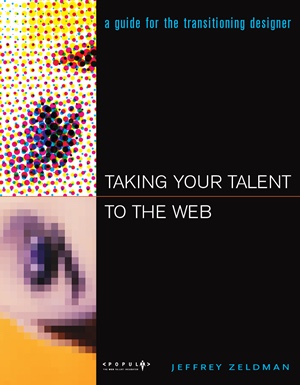
Read Taking your talent to the web
34. Introduction to Good Usability
This guide by Peter Conradie is especially handy if you haven’t done a lot of web design yet or if you are involved in web design but don’t do any of the real work. I hope to shed some light on some common interface elements and mistakes people often make with them.
Read Introduction to Good Usability
35. Task-Centred User Interface Design
The central goal of this book by Clayton Lewis is to teach the reader how to design User Interfaces that will enable people to learn computer systems quickly and use them effectively, efficiently, and comfortably. The interface issues addressed are primarily cognitive, that is, having to do with mental activities such as perception, memory, learning, and problem solving. Physical ergonomic issues such as keyboard height or display contrast are covered only briefly.
Read Task-Centred User Interface Design
Start learning today
Our extensive compilation of FREE User Experience books is a valuable resource which aims to provide you with the essential tools and knowledge to improve your UX design, conduct effective User Research and User Testing, and enhance overall Usability. Explore a wide range of expert insights and practical advice to empower you in creating exceptional User Experiences and achieving project success. Prepare for a journey of UX excellence with our meticulously curated selection of eBooks.
Next:
If you found this list useful, please share it using the social buttons below, and if you liked any of the books, let us know on X, we’d love to hear from you.
You might also like:
Creating meaningful experiences: an Introduction to User Experience design
Share this post:


























